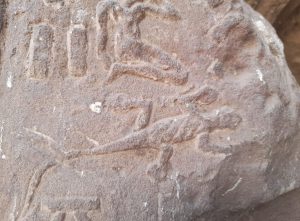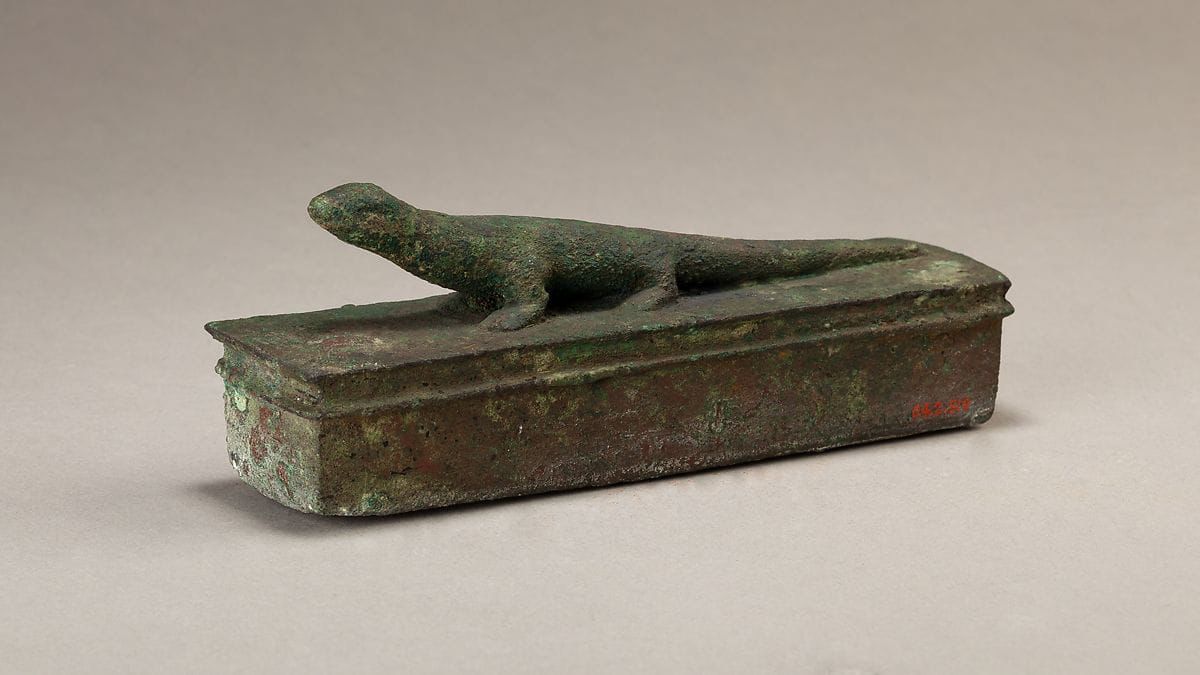By Hossam Mahmoud
The gecko is one of the most well-known reptiles in Egyptian households, frequently sneaking into homes, which often triggers a frantic cleaning campaign to get rid of it. But is this a modern concern, or does it have historical roots?
Geckos were well-known reptiles in ancient Egypt and frequently appeared in hieroglyphic symbols. In hieroglyphs, the gecko is referred to as “asha,” and was sometimes depicted with its legs spread out, accompanied by three vertical lines (III), signifying plurality. The word “asha” in hieroglyphs implies “many” or “they were,” indicating quantity or abundance.
The ancient Egyptians understood, much like modern science, that geckos posed a threat to humans, as they carried diseases. The Egyptians described the gecko as a “snake with legs,” suggesting that they believed it to be venomous—a fact supported by modern science, which has found that geckos can carry various parasites. According to the UK’s Health Protection Agency, children who come into contact with geckos are more likely to contract salmonella. Reptile expert Dr. Brendan Borrell from the U.S. discovered that some geckos carry up to ten types of salmonella. Geckos are unaffected by these bacteria but can transmit them, along with other parasites such as Cryptosporidium and pinworms.
Egyptologists believe that the ancient Egyptians’ description of the gecko as a “snake” was remarkably accurate. Modern science classifies geckos as reptiles, so the Egyptians’ understanding of the gecko as a legged reptile was quite advanced for their time, given the knowledge and cultural context of those ancient periods.

Interestingly, there is a papyrus preserved in the Berlin Museum, dating back to the first century AD and discovered in Fayoum, known as the “Book of the Geckos.” This papyrus tells of how the fall of a gecko was considered a bad omen or a sign of misfortune. Because geckos are excellent climbers and can crawl along walls, their fall was seen as a warning that something terrible might happen.
The ancient Egyptians took the fall of a gecko seriously, as the papyrus begins with the phrase “if it falls,” explaining that if someone dreams of a gecko falling, it foretells negative events in real life. The papyrus outlines the various ill omens associated with a gecko’s fall, listing the misfortunes that might follow. However, the mere presence of a gecko in an ancient Egyptian home was not related to the cleanliness of the house. Geckos could enter at any time and were not attracted to filth, unlike other reptiles that thrive in dirty environments.








































admin in: How the Muslim Brotherhood betrayed Saudi Arabia?
Great article with insight ...
https://www.viagrapascherfr.com/achat-sildenafil-pfizer-tarif/ in: Cross-region cooperation between anti-terrorism agencies needed
Hello there, just became aware of your blog through Google, and found ...